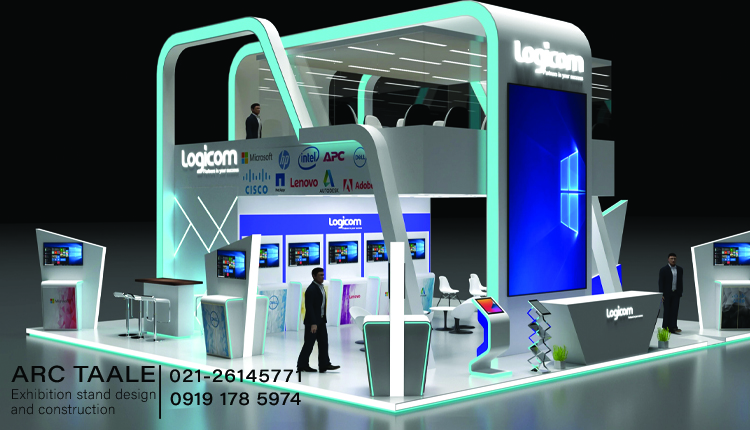Exhibitions have been a vital tool for communicating ideas, showcasing products, and displaying art for centuries. However, staging a successful exhibition requires more than just setting up displays and inviting visitors. It involves meticulous planning, coordination, and execution, all of which are guided by the five stages of exhibition planning. In this article, we will explore these stages in detail and reveal the secrets behind creating a memorable and successful exhibition.
Stage 1: Planning
Planning is the first and most critical stage of exhibition planning. It involves identifying the exhibition’s purpose, goals, and objectives, determining the target audience, and establishing a budget and timeline. During this stage, exhibition organizers should also decide on the exhibition’s theme, messaging, and style, as well as identify potential partners, sponsors, and stakeholders. By having a clear understanding of what they want to achieve, exhibition organizers can establish a project management plan that includes a detailed timeline, milestones, and deadlines.
Stage 2: Design
Design is the stage where the exhibition concept is developed, and a design for the exhibition space is created. This stage is crucial for ensuring that the exhibition is visually appealing, informative, and engaging to visitors. Exhibition organizers should decide on the theme, style, and layout of the exhibition space, select appropriate colors, lighting, and materials, and design exhibits and displays that align with the exhibition’s goals and objectives. The team should also consider visitor flow, accessibility, and safety when designing the exhibition space.
Stage 3: Preparation
The preparation stage is where the exhibition team produces the exhibits and displays, creates informational materials, and sets up the exhibition space. This stage involves identifying suppliers, ordering materials and equipment, and producing exhibit components such as graphics, videos, and models. The team should also develop informational materials such as brochures, maps, and labels, and coordinate the installation of exhibits and displays. The exhibition team should also ensure that all equipment and displays are working correctly and that the exhibition space is clean and well-maintained.
Stage 4: Presentation
The presentation stage is when the exhibition is unveiled to the public, and the exhibits and displays are arranged. During this stage, the exhibition team should ensure that all equipment and displays are working correctly, that the exhibition space is clean and well-maintained, and that visitor flow is optimized. The team should also train exhibition staff and volunteers to provide visitor services, such as wayfinding, interpretation, and support. The presentation stage is critical for creating a positive visitor experience and ensuring that the exhibition meets its goals and objectives.
Stage 5: Evaluation
The final stage in exhibition planning is evaluation. It involves assessing the exhibition’s success against its goals and objectives and analyzing visitor feedback. The exhibition team should analyze data such as attendance, visitor demographics, and visitor feedback, and use this information to develop recommendations for future exhibitions. The evaluation stage is critical for improving the exhibition’s success and ensuring that it meets the needs of its intended audience. The exhibition team should use the evaluation findings to refine the exhibition concept and design and to identify areas for improvement.
The Key Steps to Planning and Executing a Successful Exhibition
Exhibitions provide a valuable platform for showcasing products, services, and ideas to a wide audience. However, planning and executing a successful exhibition can be a daunting task. To ensure a memorable and effective exhibition, organizers must follow key steps throughout the planning process. In this article, we will explore the key steps to planning and executing a successful exhibition.
Step 1: Define Your Objectives
Before diving into the details of exhibition planning, it’s essential to define your objectives. What do you want to achieve from the exhibition? Is it to generate leads, increase brand awareness, or showcase new products? Defining your objectives will help you determine the exhibition’s theme, target audience, and marketing strategies.
Step 2: Develop a Budget
Once you’ve defined your objectives, it’s time to develop a budget. Exhibitions can be costly, so it’s essential to have a clear understanding of the expenses involved. Consider all the costs, including venue rental, marketing, staffing, and equipment rental. Having a clear budget will help you prioritize expenses and ensure you stay on track financially.
Step 3: Choose the Right Venue
The venue is a crucial aspect of exhibition planning. The venue should be accessible, attractive, and able to accommodate your needs. Consider the venue’s size, location, and amenities, and ensure it aligns with your exhibition’s theme and objectives. It’s also essential to confirm availability and book the venue well in advance.
Step 4: Develop an Exhibition Plan
With the objectives, budget, and venue in place, it’s time to develop an exhibition plan. The plan should outline the exhibition’s theme, floor plan, marketing strategy, and staffing requirements. The plan should also identify potential challenges and provide contingency plans. The exhibition plan is a comprehensive document that guides the exhibition planning process from start to finish.
Step 5: Design the Exhibition Space
Designing the exhibition space is a critical aspect of exhibition planning. The design should be attractive, engaging, and aligned with the exhibition’s theme and objectives. Consider using interactive displays, lighting, and audiovisual equipment to create a memorable and immersive experience. It’s also important to ensure the exhibition space is accessible and comfortable for visitors.
Step 6: Market the Exhibition
Marketing is essential for generating buzz and attracting visitors to the exhibition. Consider using a mix of traditional and digital marketing channels, including social media, email marketing, and advertising. It’s also important to target the right audience and tailor your messaging to their interests and needs.
Step 7: Prepare for the Exhibition
With the planning and marketing complete, it’s time to prepare for the exhibition. This includes finalizing the exhibition space design, confirming staffing and equipment rental, and preparing promotional materials. It’s also essential to conduct a thorough run-through of the exhibition to identify any potential issues or challenges.
Step 8: Execute the Exhibition
Finally, it’s time to execute the exhibition. Ensure all equipment is in place, staffing is ready, and promotional materials are distributed. It’s also important to greet visitors and provide them with any necessary information or assistance. During the exhibition, monitor attendance, engagement, and feedback to identify areas for improvement.
In conclusion, planning and executing a successful exhibition requires careful attention to key steps throughout the process. By defining objectives, developing a budget, choosing the right venue, designing the exhibition space, marketing the exhibition, preparing for the event, and executing the exhibition, organizers can create a memorable and effective exhibition that achieves its goals and objectives.
At the end
In conclusion, exhibitions are an excellent way to communicate ideas, showcase products, and display art to a wide audience. However, the five stages of exhibition planning – planning, design, preparation, presentation, and evaluation – are critical for ensuring a successful exhibition. By following these stages, exhibition organizers can create a memorable and engaging exhibition that communicates their message effectively and leaves a lasting impression on their visitors.



